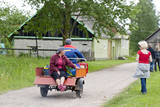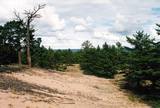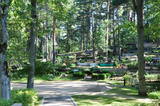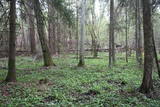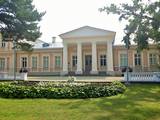| Nr | Nosaukums | Apraksts |
|---|---|---|
|
Atpūtas vieta ģimenes īpašumā Vārvē, kurā tiek piedāvāti pirts rituāli. Tāpat ir iespēja pārnakšņot namiņā un atpūsties pie dabas un Ventas upes. |
||
|
Pāvilostā ir trīs parki. Pāvilostas centrā (pie kultūras nama) atrodas Piecdesmitgades parks, kuru 1929. g. iekopa skolotājs un novadpētnieks Ernests Šneiders. Vienu ozolu tajā esot iestādījis Latvijas Valsts prezidents Gustavs Zemgals. Simtgades parks ar piemiņas akmeņiem tapa Sakas labajā krastā jau kā turpinājums iesāktajam. Vecākais no Pāvilostas parkiem - Upesmuižas parks (19. gs.) atrodas tuvu Liepājas – Ventspils šosejai. Upesmuižas pils nav saglabājusies (nodedzināta 1905. g.). Parkā apskatāms sens akmens sols (perimetrs 5,55 m) un Upesmuižas parka Lielais akmens. Domājams, tas ir kultakmens. |
||
|
Pīrissāre ir 7,5 km² liela pastāvīgi apdzīvota Peipusa ezera sala. Pārsvarā šeit uz dzīvi ir apmetušies krievu vecticībnieki, kas vairākus gadsimtus rūpējas par savas savdabīgās kultūras saglabāšanu. Iedzīvotāji galvenokārt nodarbojas ar zvejniecību. Uz lauksaimniecībai piemērotas zemes audzē dārzeņus, visvairāk – sīpolus. Uz Pīrisāri no Lāksāres ostas var nokļūt ar prāmi "Koidula" (tālr.: +372 527 2974, www.veeteed.com). |
||
|
Cirma ezera rietumu krastā slejas 1830. g. no laukakmeņiem būvētā baznīca. Tā ir slavena ar Jaunavas Marijas gleznu, kam piedēvē brīnumdarītājas spējas. Šī iemesla dēļ dievnams ir populārs svētceļnieku galamērķis. |
||
|
Ap 200 m garajā un izstieptās formas laukumā no 16. – 20. gs. atradās Liepājas tirgus. Laukuma malās tolaik bija izveidojusies vienstāvu apbūve – iebraucamās sētas, viesnīcas un dārzi. Līdz ar Pētertirgus izveidi 1910. gadā, izmainījās arī laukuma apveidi un to ieskaujošā apbūve. Laukuma DA malā slejas iespaidīgā Liepājas Svētās Annas Luterāņu baznīca. |
||
|
Mežiem klāta sala (6. lielākā Igaunijas sala) Somu līcī 14 km Z no Tallinas. Vēl pirms divām desmitgadēm – slēgtā zona, jo Padomju laikā te atradās ļoti slepena jūras mīnu ražotne.
|
||
|
Krodziņš "Rūdolfs" atrodas Kokneses centrā, Kokneses muižas pārvaldnieka mājā, un nosaukts latviešu novelista Rūdolfa Blaumaņa vārdā, kas mācījies muižā un nodzīvojis tajā divus gadus. Latviešu virtuve: Rasols, siļķu salāti, pupiņu salāti, Valmieras salāti, sīpolu sitenis, cūkgaļas ribiņas, mājas kotletes, cepetis mārrutku mērcē, cepta akna, siļķe ar biezpienu, auzu pārslu kārtojums. Īpašais ūdens: „Krodzinieka šķēle”. |
||
|
Viena no retajām vietām Latvijā, kur tik plašā teritorijā ir izveidots labiekārtotu taku tīkls. Tērvetes apkārtne pazīstama gan ar saviem pilskalniem, latviešu rakstnieces Annas Brigaderes (1861. – 1933.) dzīves un darba vietu un tās pasaku tēliem, kas iemiesojušies parka skulptūrās, gan Dižsilu, Dendrāriju, Tērvetes senvēstures muzeju, skatu torni, ainavām u.c. Tērvete atzīta kā ģimenei draudzīga vieta. |
||
|
Kapsēta šajā vietā (Siguļi) pastāv jau no 1773. gada. Carnikavas kapos dus izcilais latviešu tautas dzejnieks Ojārs Vācietis (1933. – 1983.), kur tam uzstādīts piemineklis. Apskatāma arī 18. gs. celtā Carnikavas muižas kapliča un muižas nomnieka Falka kapakmens. |
||
|
Atrodas Cenas tīreļa dabas takas sākumā. No tā labi pārskatāma kūdrā izstrādātā Cenas tīreļa neliela daļa. |
||
|
Viena no retajām vietām Latvijā (sk. arī Nīcas īvju audzi), kur savvaļā aug divas retas un aizsargājamas augu sugas – parastā īve un Baltijas efeja. Teritorija nav labiekārtota un piemērota apskatei kā tūrisma objekts, kā arī dabā nav atpazīstamas tās robežas (nav informatīvo zīmju). |
||
|
Piemājas saimniecībā “LIELKALNI” 2 ha platībā kopš 2006. gada iestādīts netradicionālu ogulāju dārzs: zelta jāņogas, irbenes, lielaugļu lazdas, smiltsērkšķi, melnais plūškoks, citronliānas, aktinīdijas, ēdamie sausserži, u.c. Kopš 2008. gada sertificēta Bioloģiskā lauksaimniecība. 2009. gadā iegūts PVD sertifikāts un saimnieki sākuši gatavot un pārdot veselību stiprinošus sīrupus, želejas, ievārījumus un tējas. Tūristiem piedāvā degustēt tējas, sezonas ogas, sīrupus, želejas un citus gardumus, kā arī tos iegādāties.
|
||
|
Strenču novada Jērcēnu pagasta zemnieku saimniecība “Veckūkuri” ir iekļauta Latvijas ražīgāko ganāmpulku topā. "Veckūri" ir piena pārstrāde, kas ražo netradicionālus piena produktus no savā saimniecībā iegūtā piena. Saimniecība ierindota arī to uzņēmumu vidū, kam piešķirti valsts eksporta padomes apbalvojumi “Latvijas Eksportprece 2015”. |
||
|
Renavas parks (izveidots 19.gs.) ir viens no reprezentatīvā tipa Lietuvas parkiem, saglabājis pirmatnējās dabas skaistumu. Nelielā muižas parka parterī līdz mūsdienām saglabājušies ne mazums eksotisku koku. Parka ziemeļu daļā un meža parkā dominē kļavas, liepas, oši, egles, ozoli u.c. Parka lepnums – resnākā Lietuvas egle, kuras diametrs ir 1,2 metri; tāpat arī liepa, uz kuras nolīkušā stumbra izaugušie seši zari izveidojušies par pastāvīgiem vertikāliem stumbriem. Parkā ieved vīteņaugiem apstādītā lapene. |
||
|
Taka iesākumā ved pa mežu ieskautu bijušo šaursliežu dzelzceļa līniju, pa kuru pagājušā gadsimta vidū izveda kokmateriālus. Tās tālākā daļa izmet nelielu loku pa Suistna purvu (Suistna raba), kur uzcelts skatu tornis ar izcilu sūnu purva ainavu ar nelieliem ezeriņiem. Takas garums vienā virzienā ir 4,5 km. |
||
|
Atrodas Numerenes dabas parka teritorijā. 20 m augstais tornis uzbūvēts uz t.s. Numerenes vaļņa, no kura paveras plaša ainava un aizaugošām lauksaimniecības zemēm un nelielu mitrāju ar Kugreņa ezeru austrumu virzienā. Torņa apkaimē izveidota izziņas taka. |
||
|
Atrodas Sedas purvā (Sedas dabas takas malā) ar plašu skatu uz izstrādātajām kūdras platībām. Sedas taku ieteicams izstaigāt vietējā gida pavadībā T: + 371 2636162. |
||
|
Pie Priedīšu mājām izveidotā dabas taka iepazīstina ar Dziļezeru un tā apkārtni. Dziļezers ar Riebezeru un pārējie – Mazezers, Auziņu ezers, Skujas ezers un Bruņķītis atrodas subglaciālā (ledāja veidotā) iegultnē, kuras krastos aug dažādu tipu, t.sk. platlapju meži - aizsargājami biotopi. Ietilpst Dziļezera un Riebezera dabas lieguma teritorijā. Atrodas Ziemeļvidzemes biosfēras rezervātā.
|
||
|
Picērija atrodas Kuldīgā netālu no pilsētas vēsturiskā centra. Stender’s picērijas jaukā, mājīgā vidē piedāvā īpašās Stender’s picas, kuras ir pagatavotas ievērojot senās picas cepēju tradīcijas apvienojot ar mūsdienu labākajām atziņām. Bez šaubām neiztikt bez pankūkām un podiņiem, kā arī otrajiem ēdieniem. |
||





